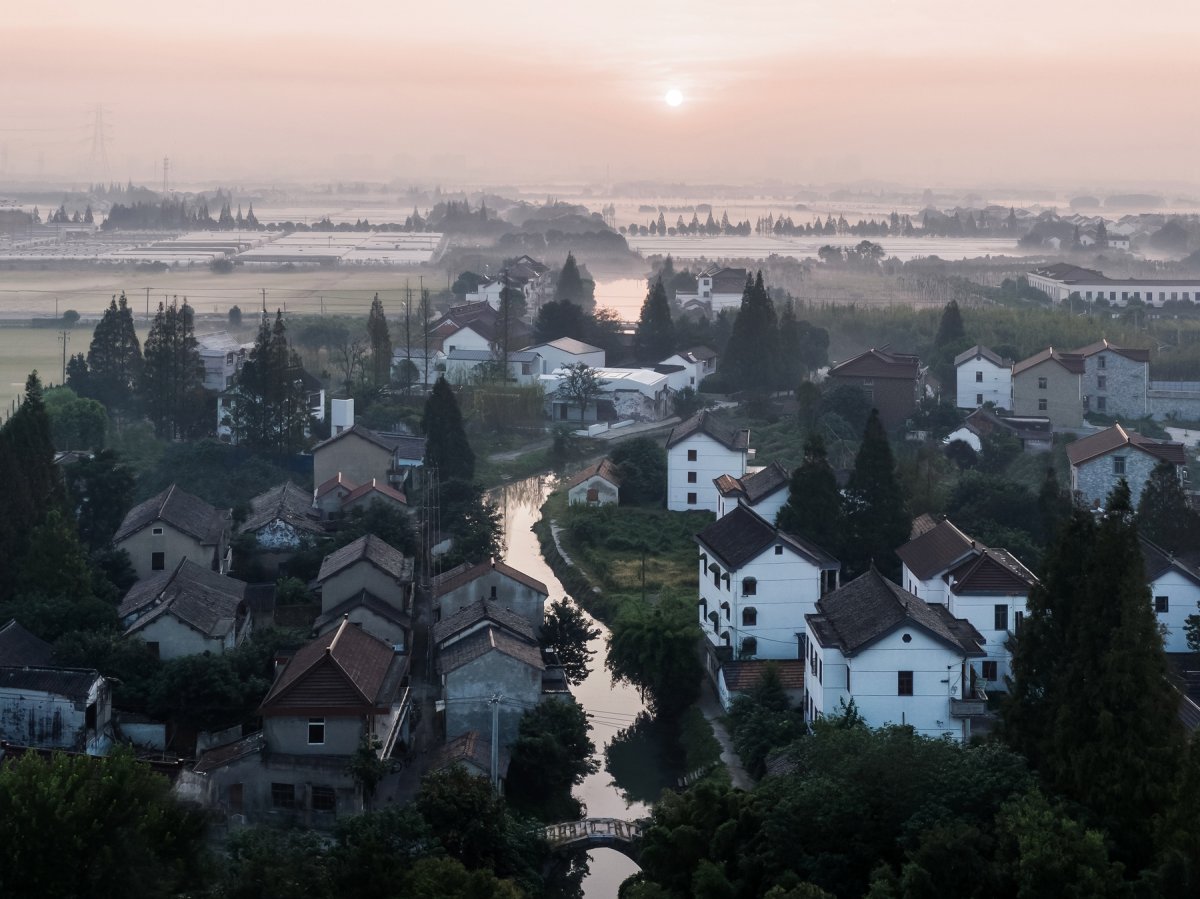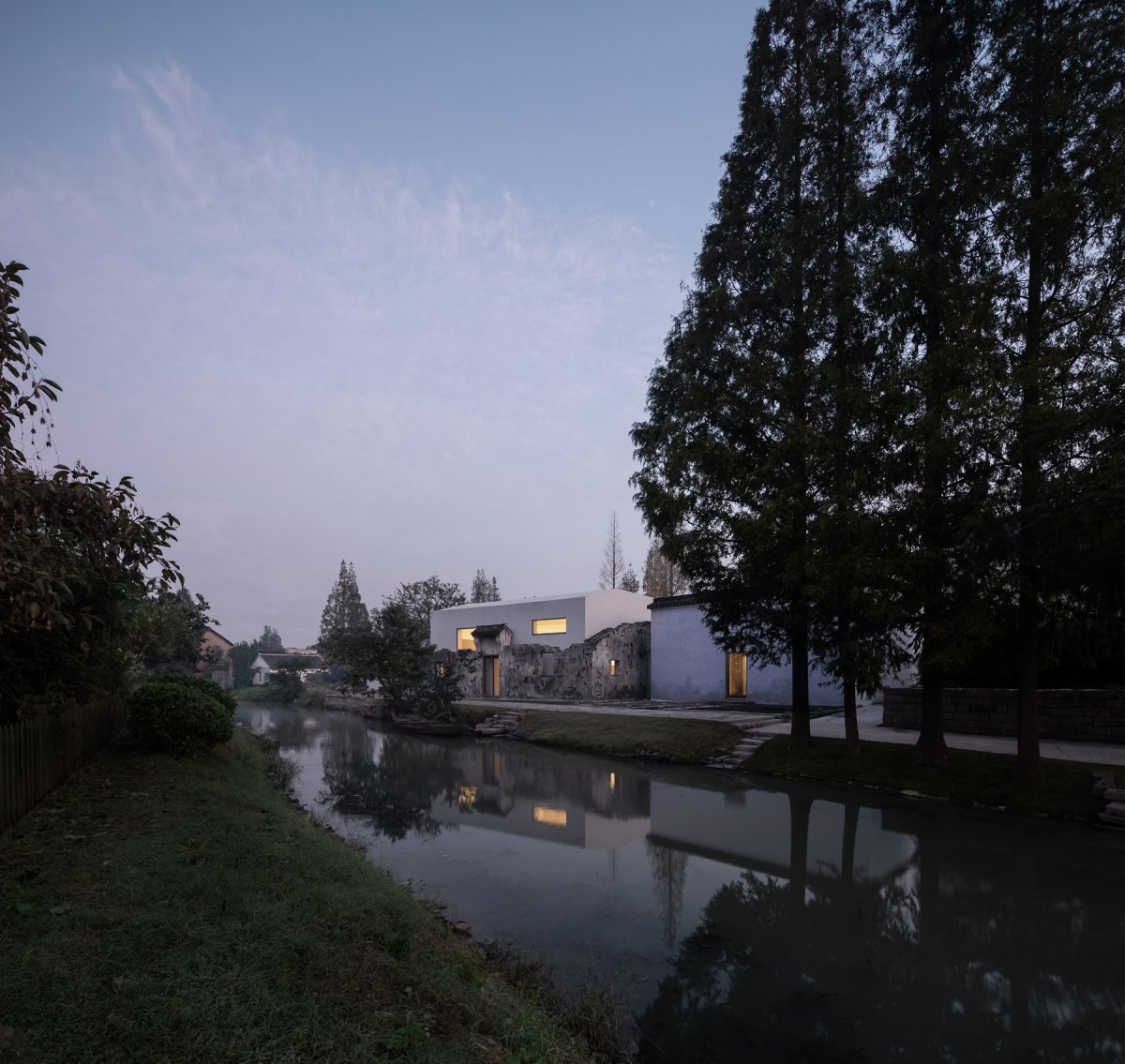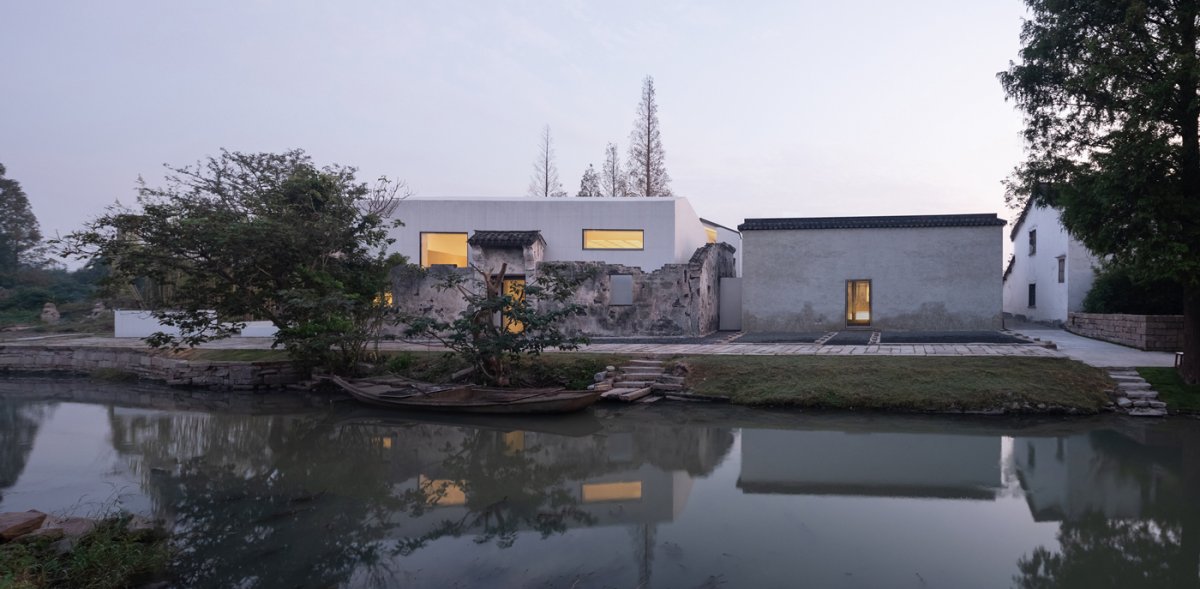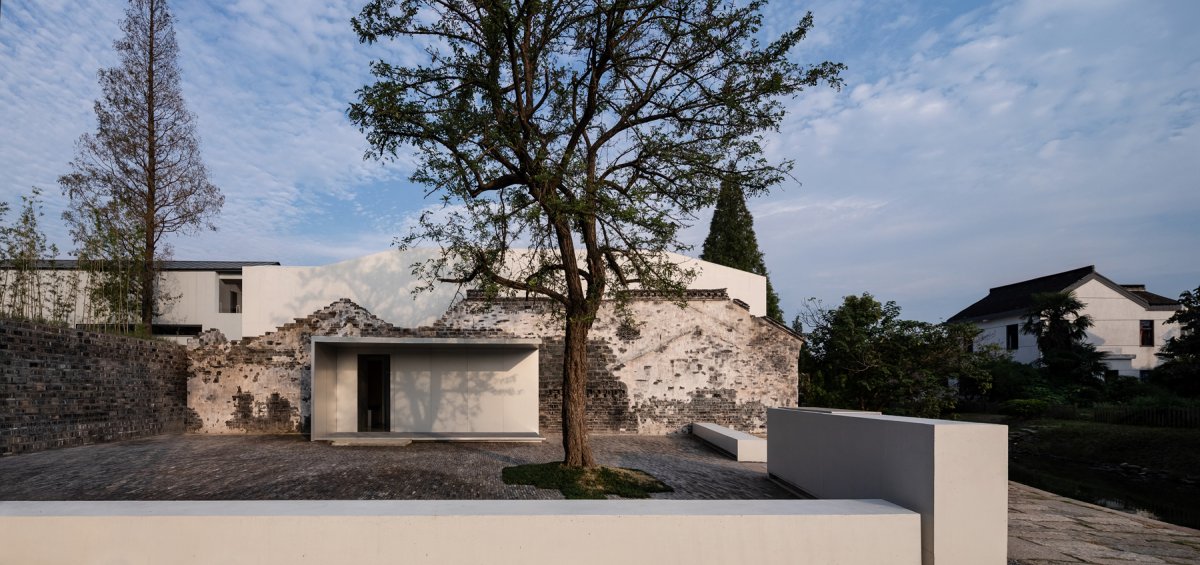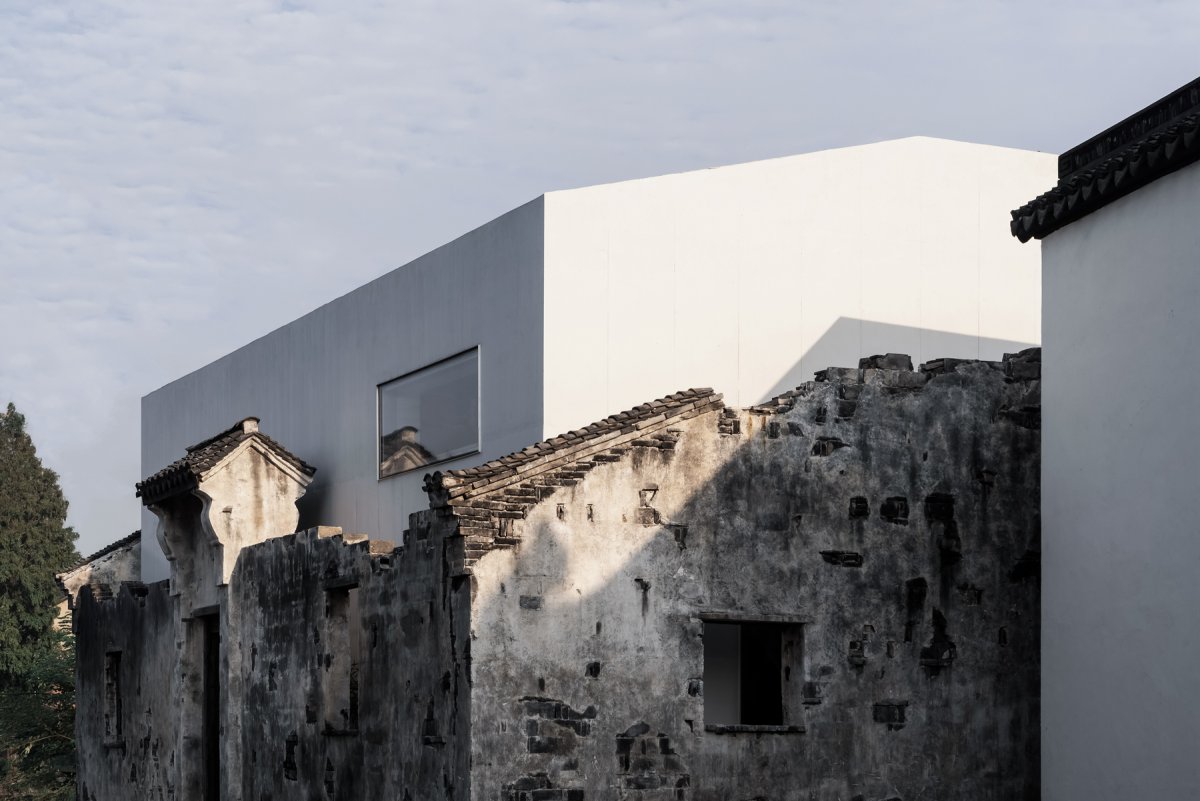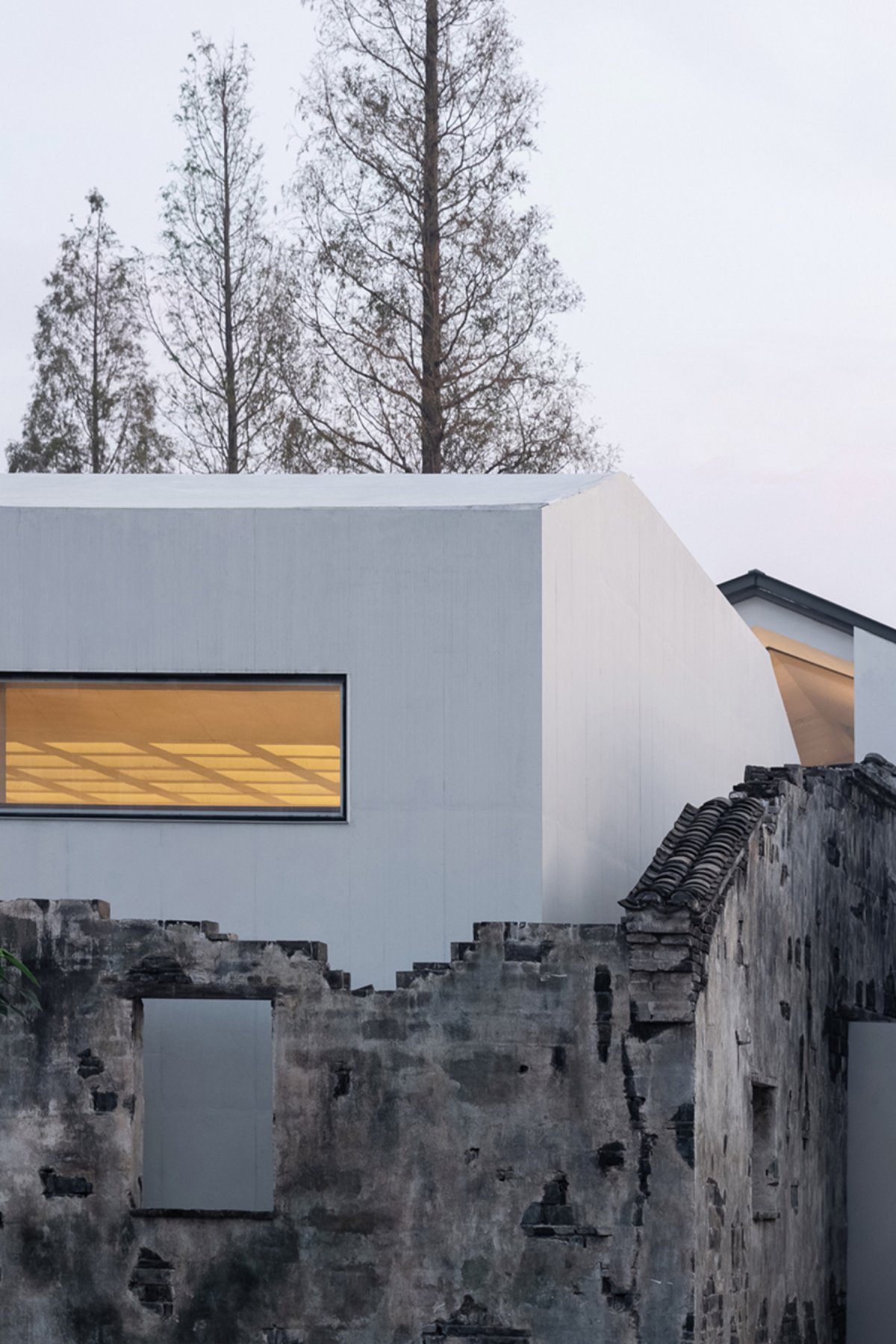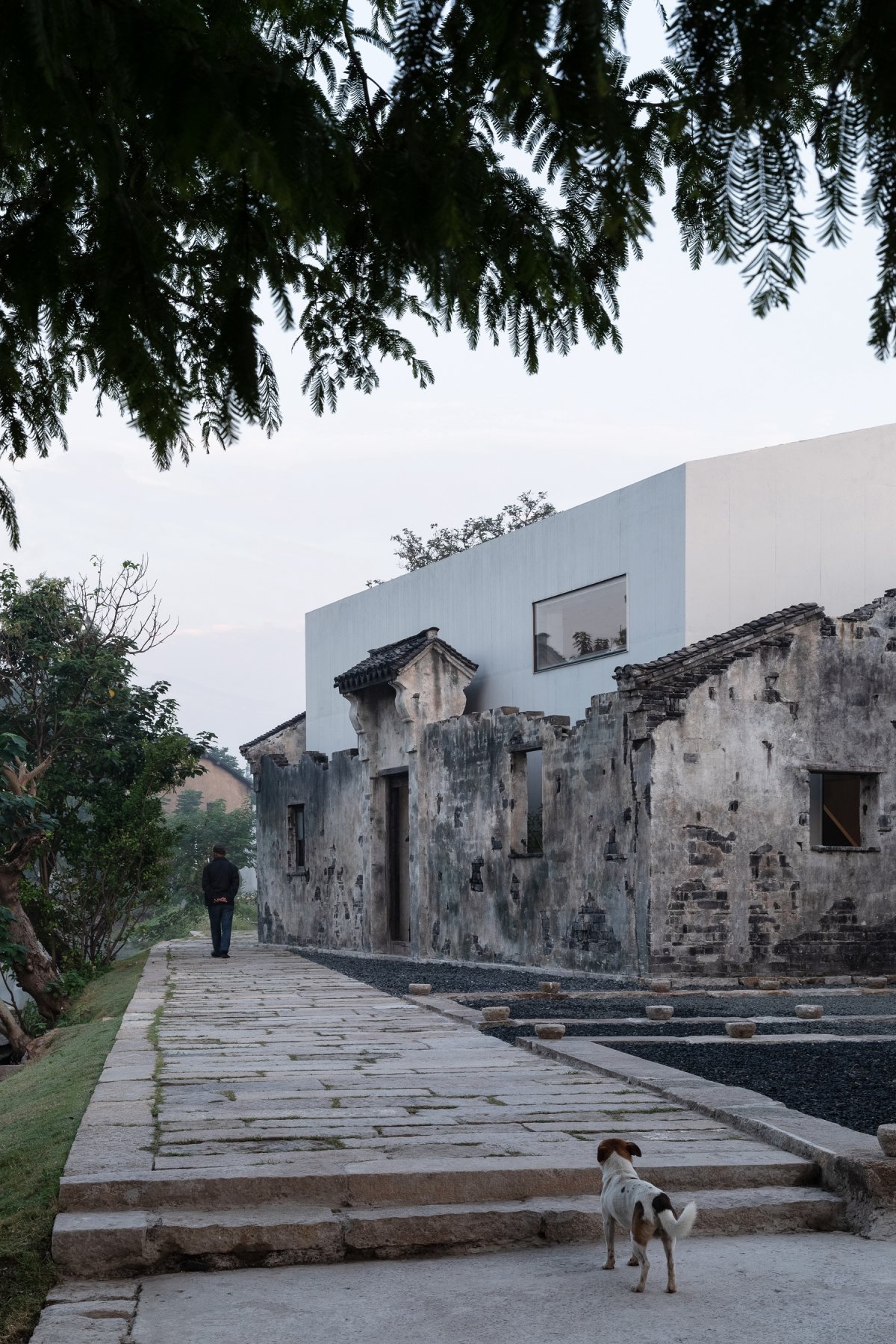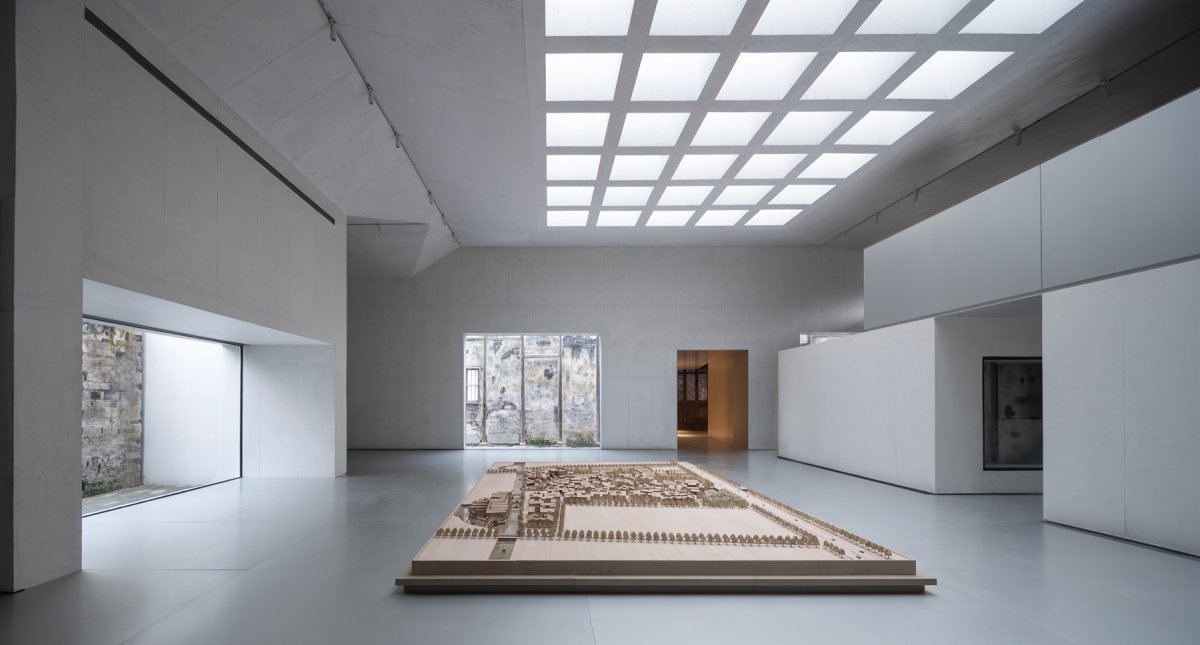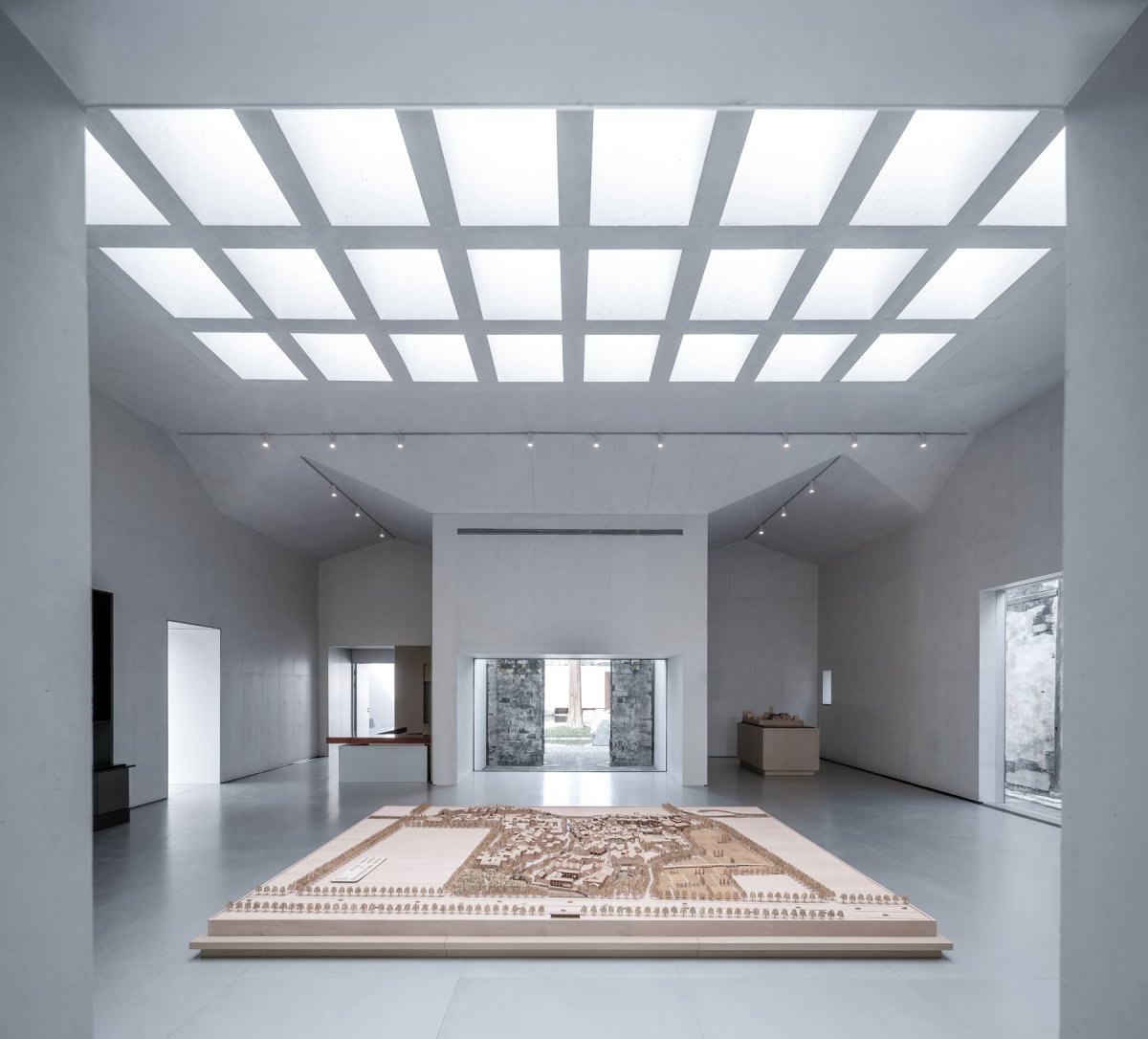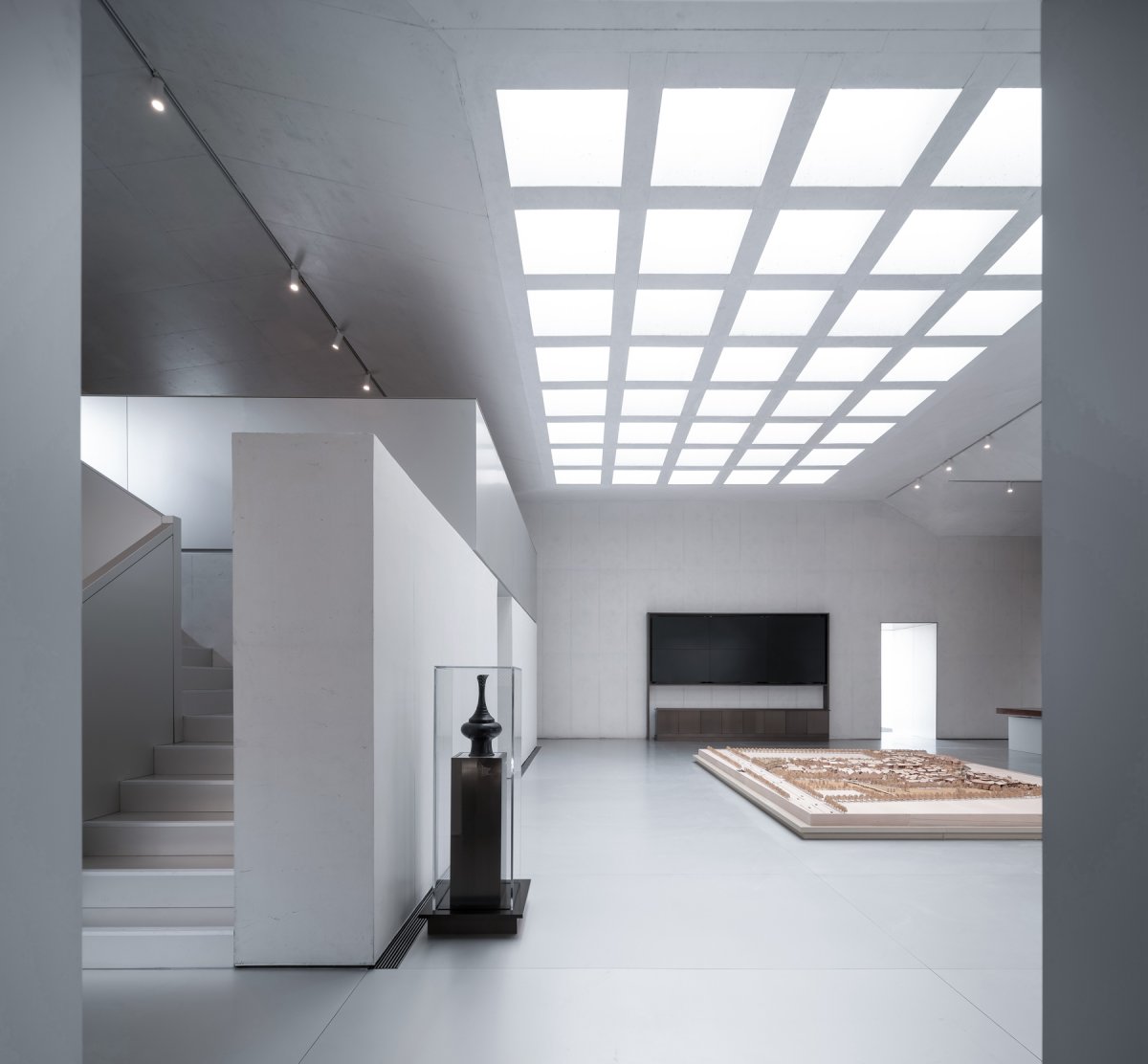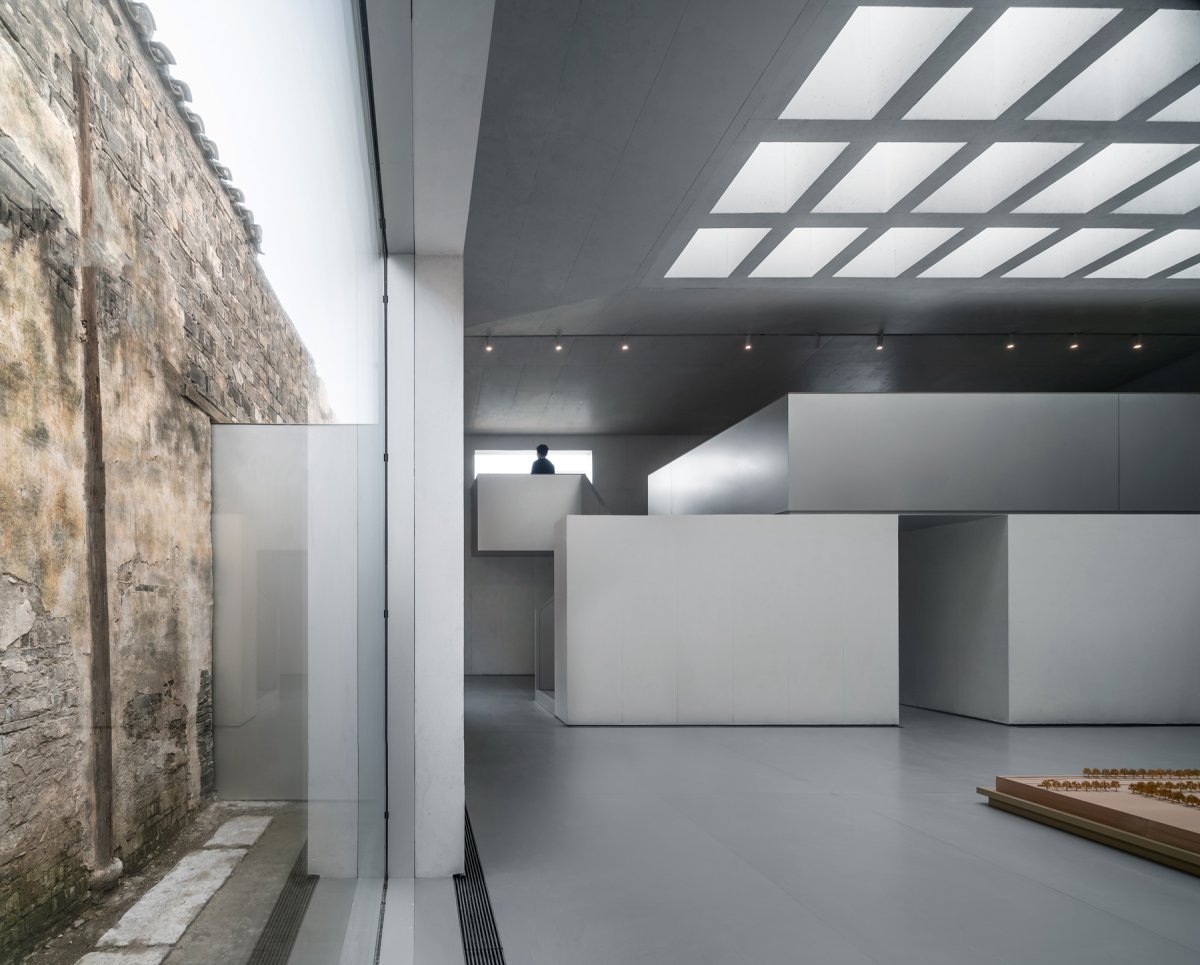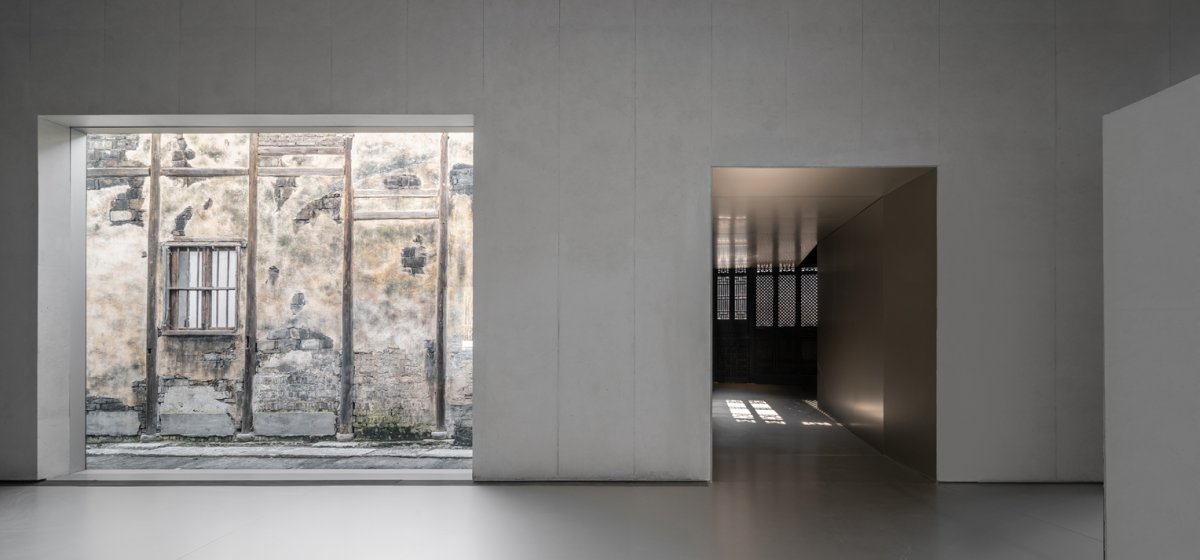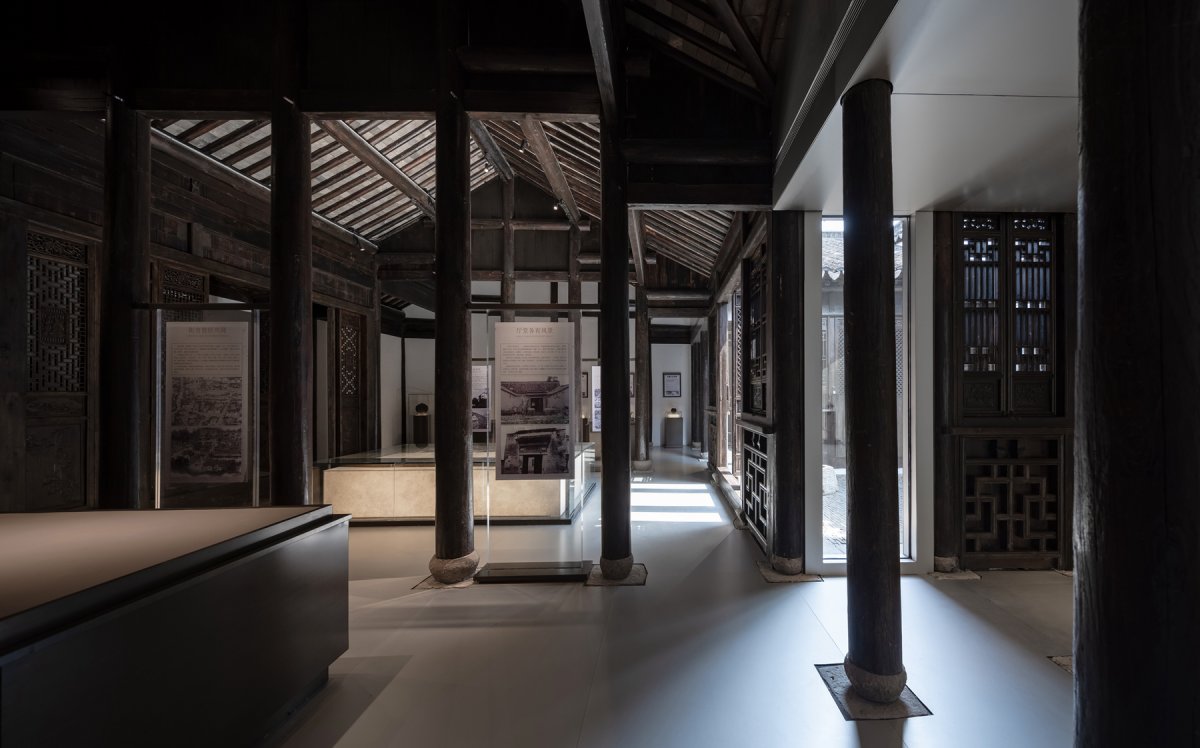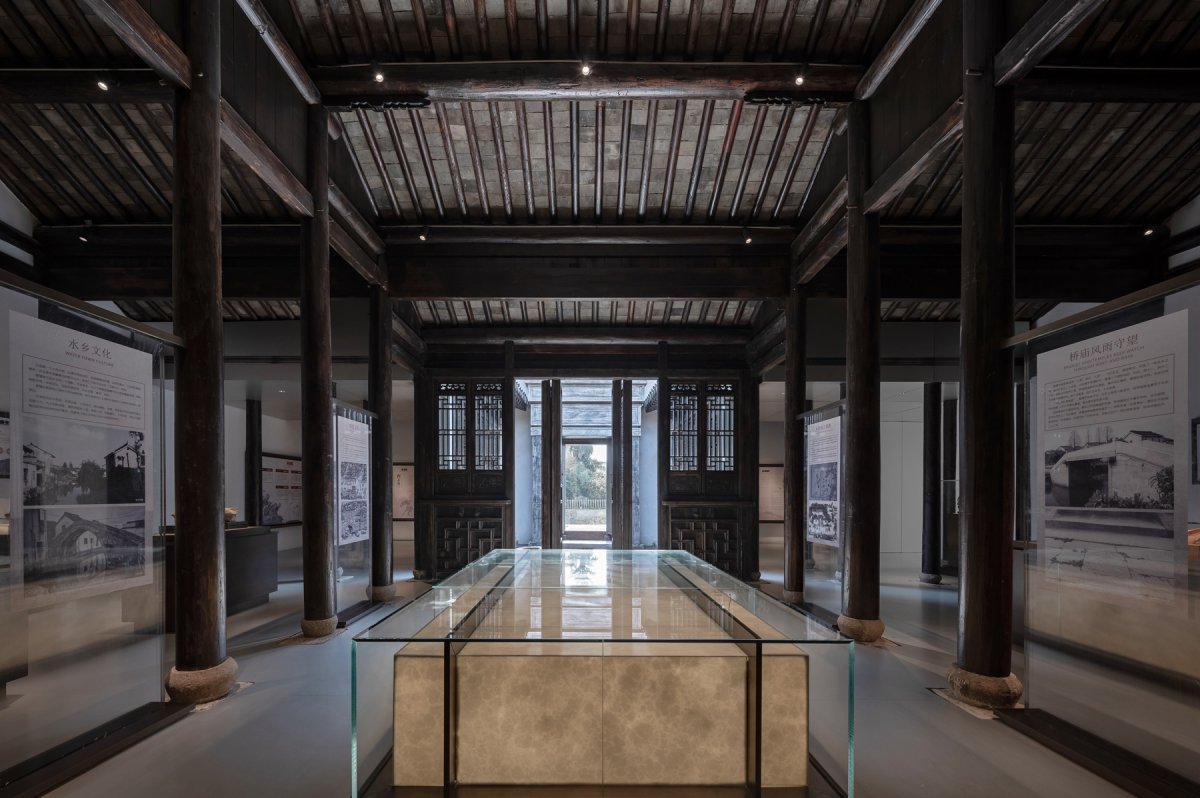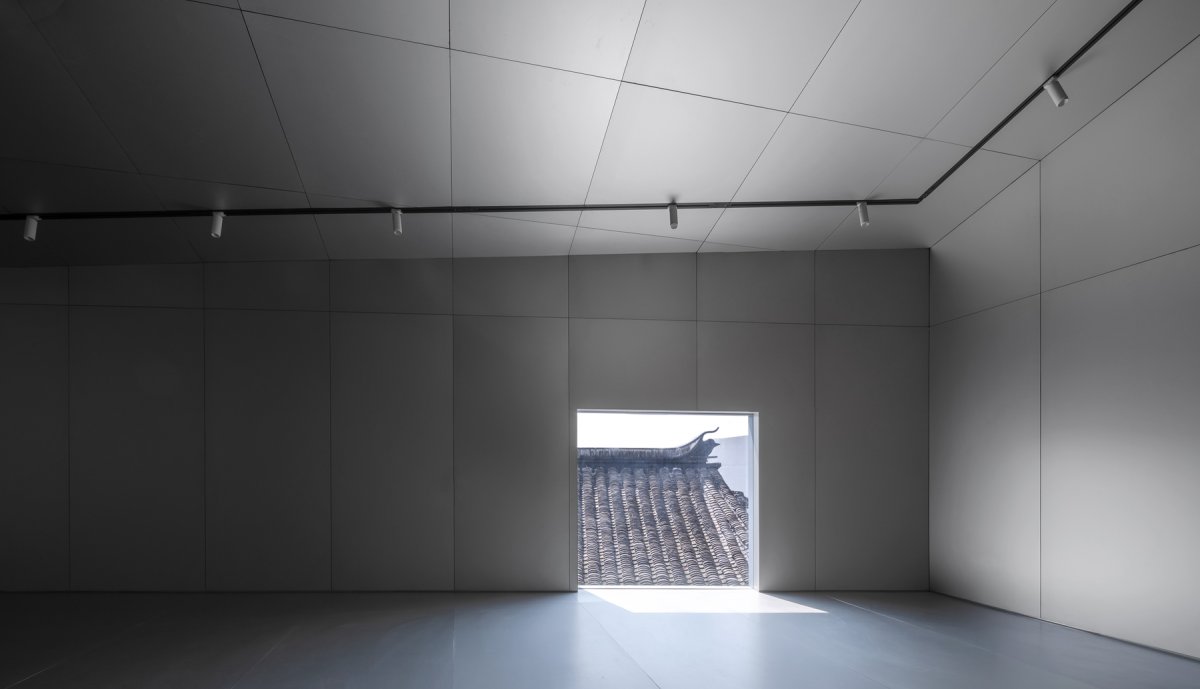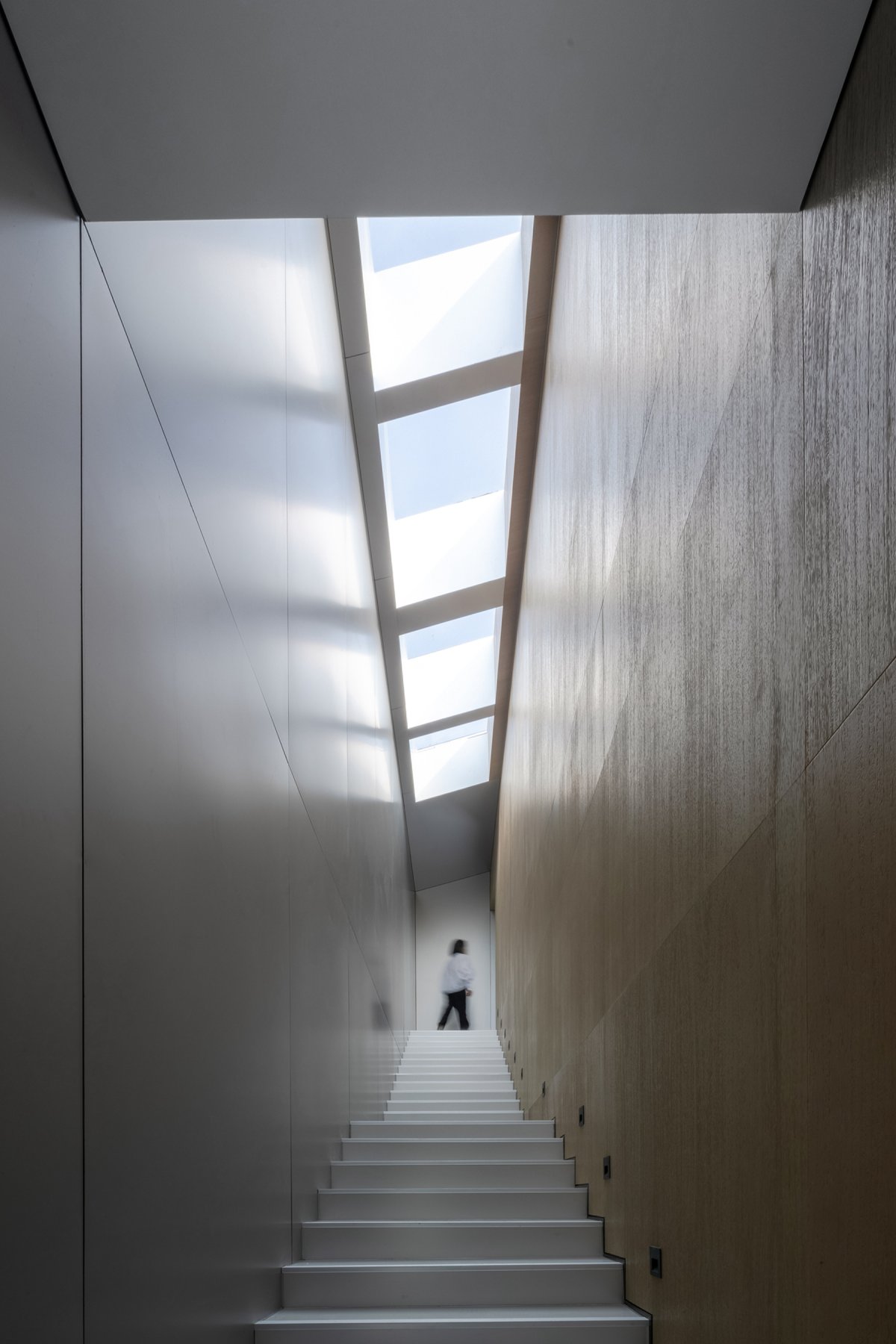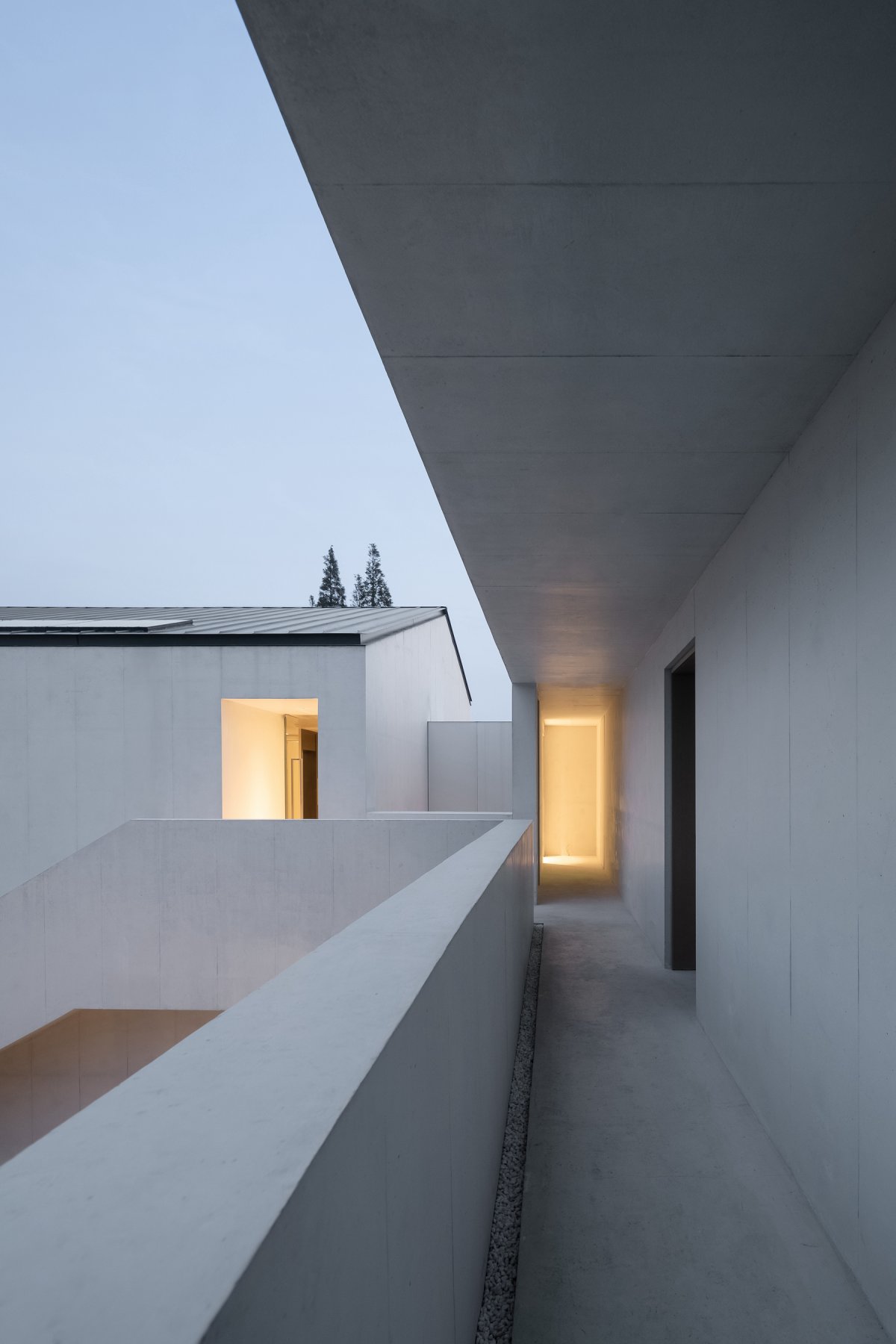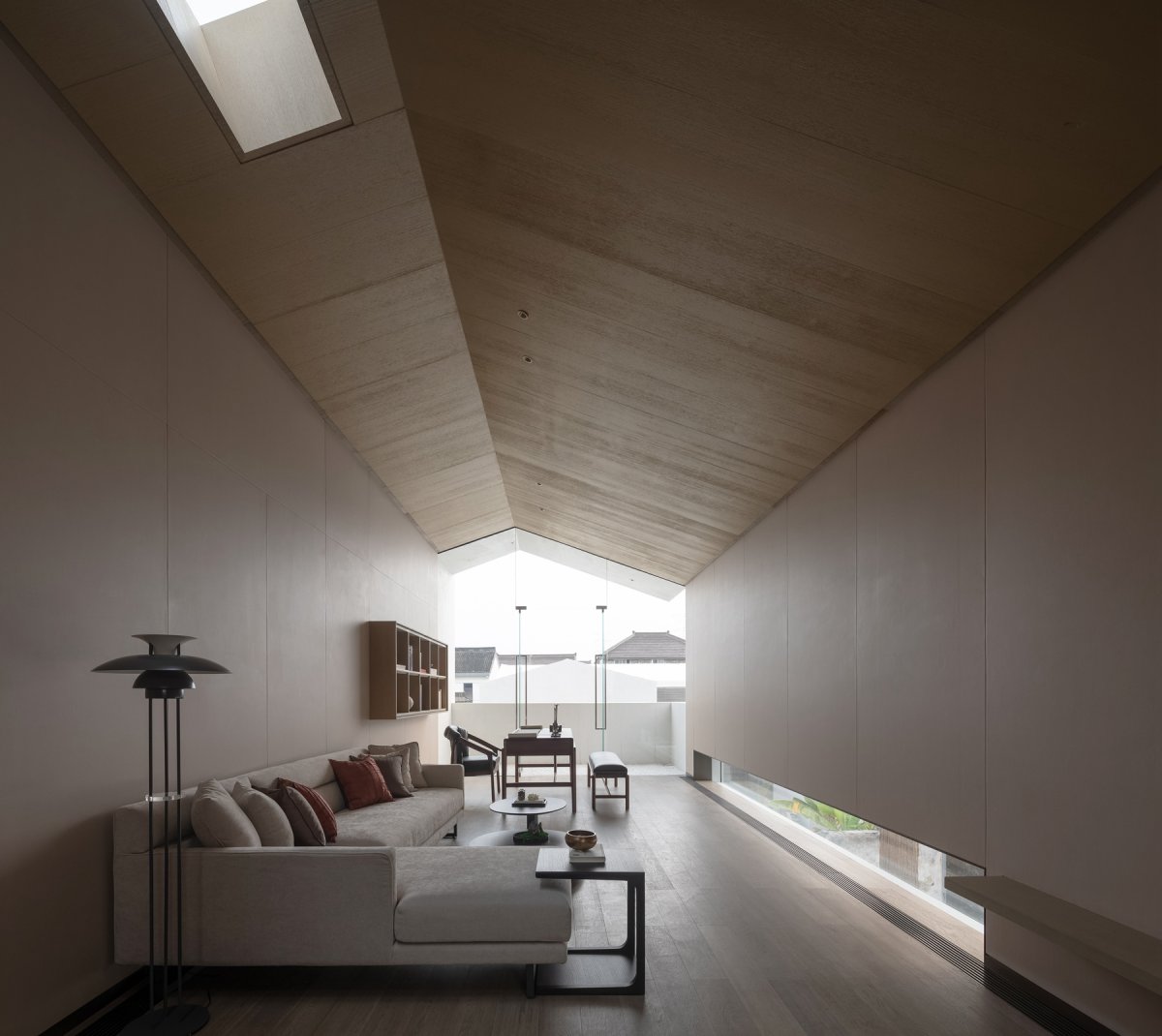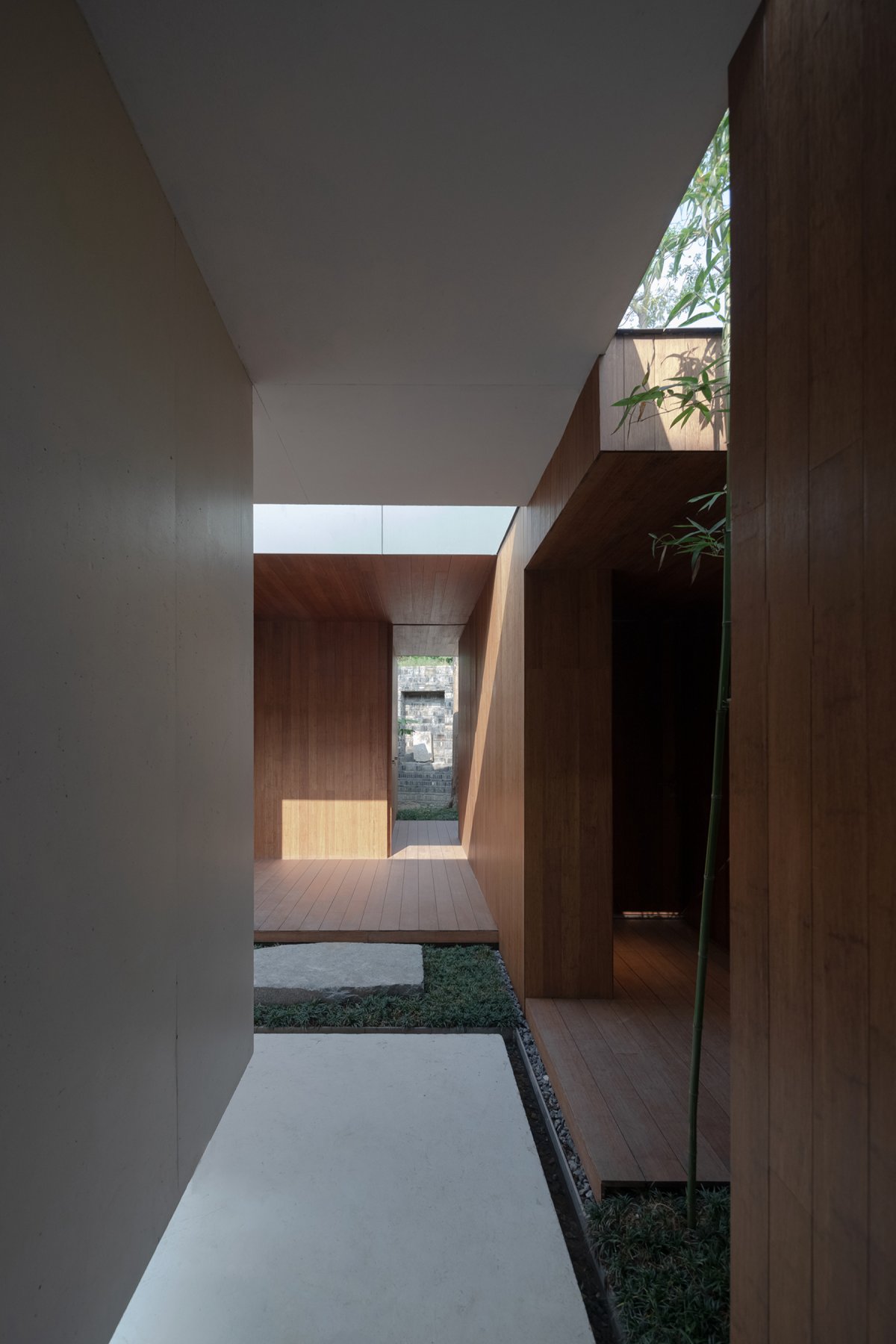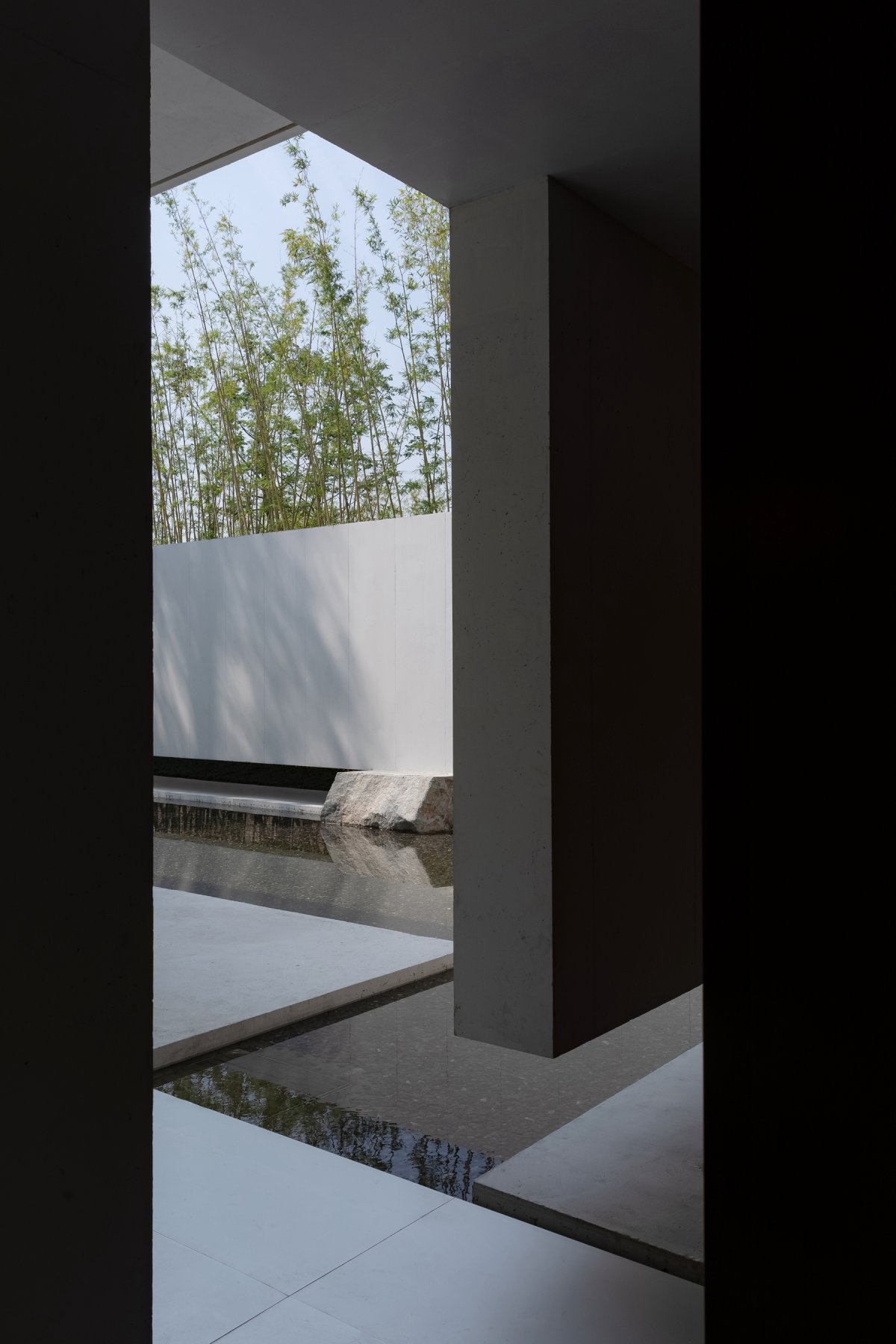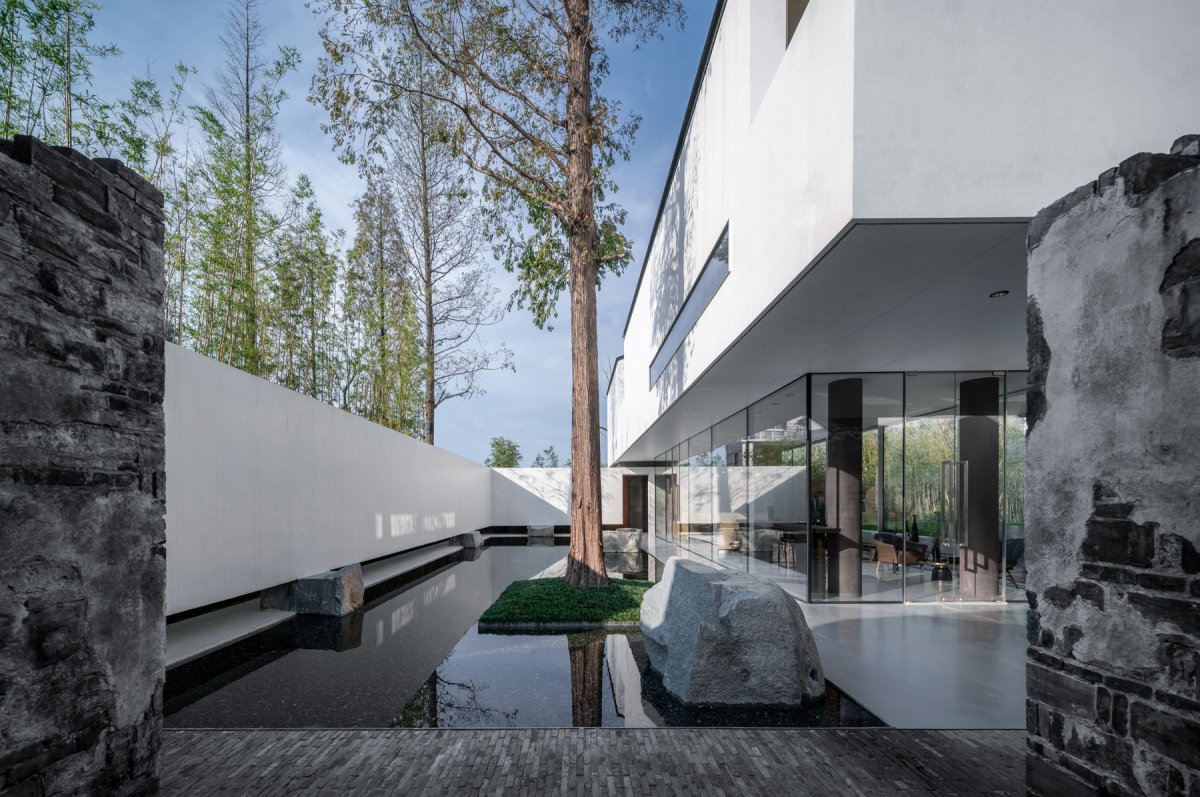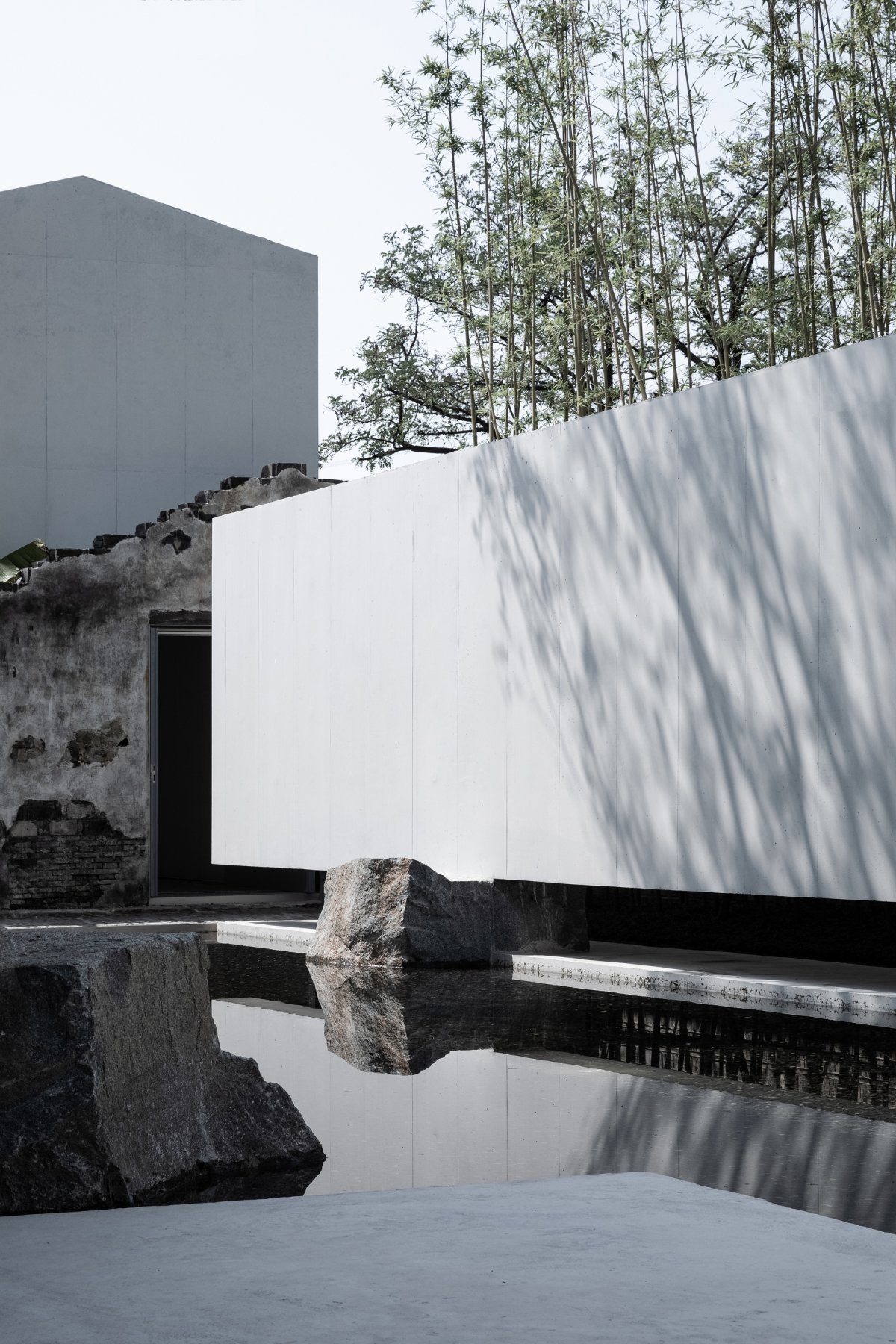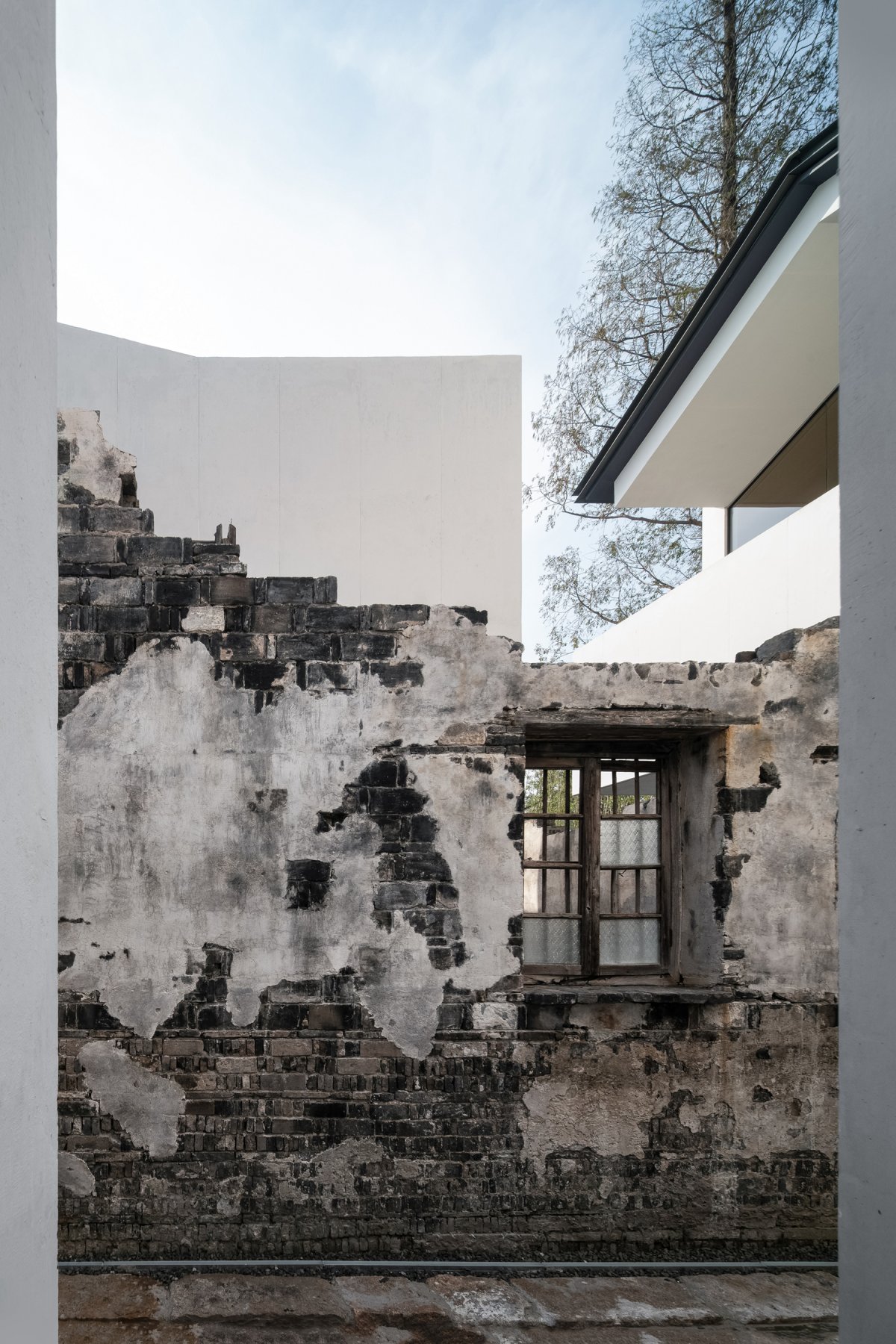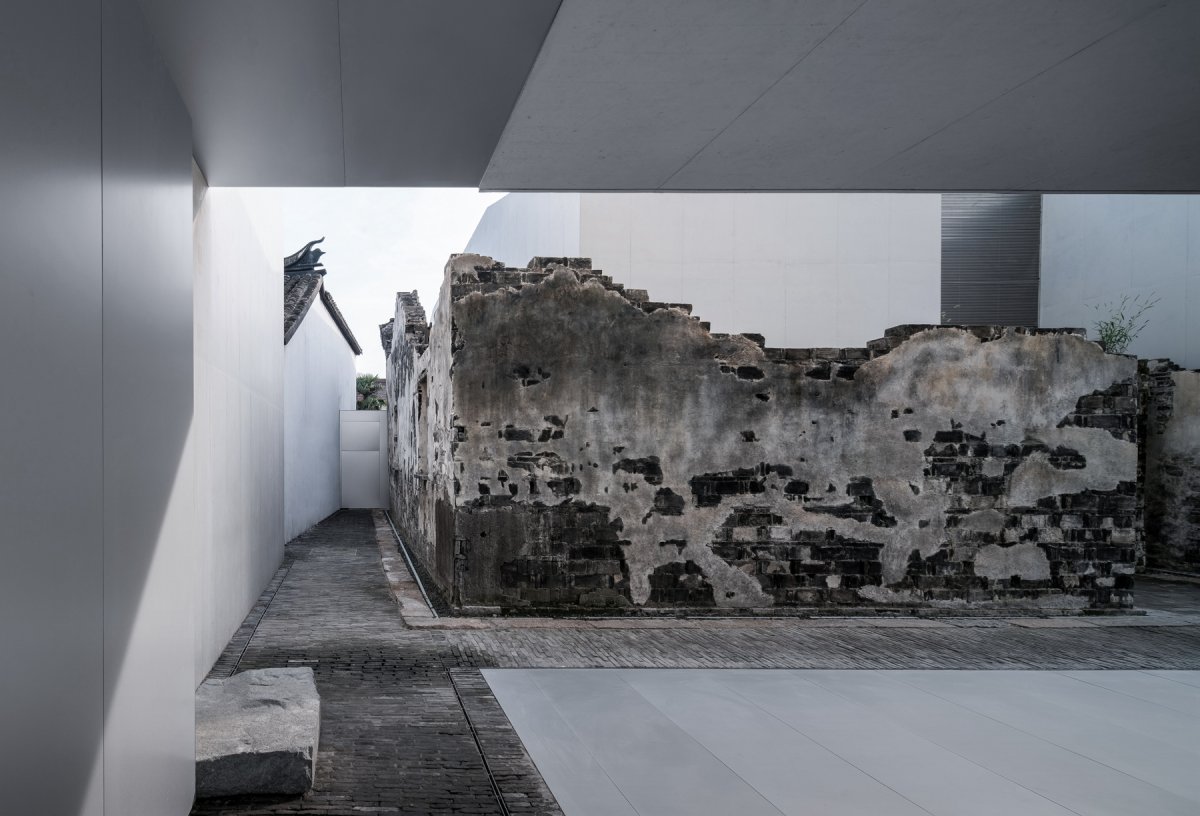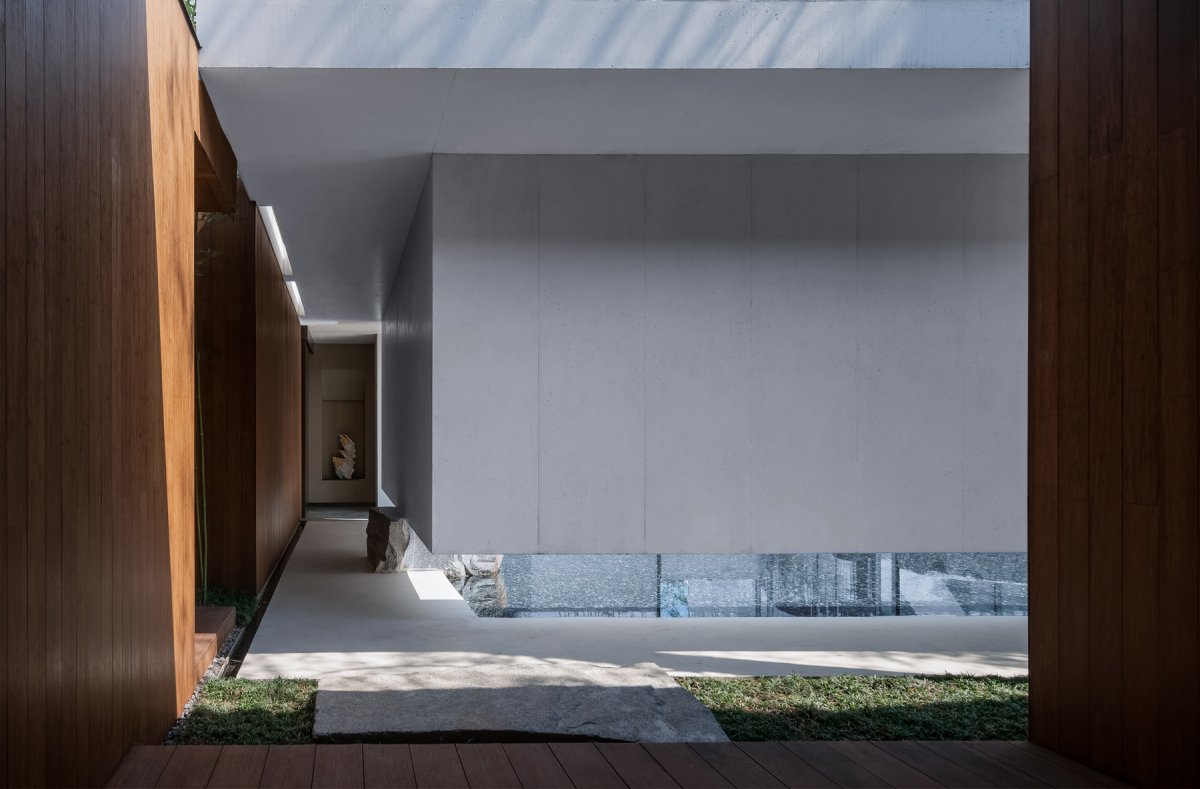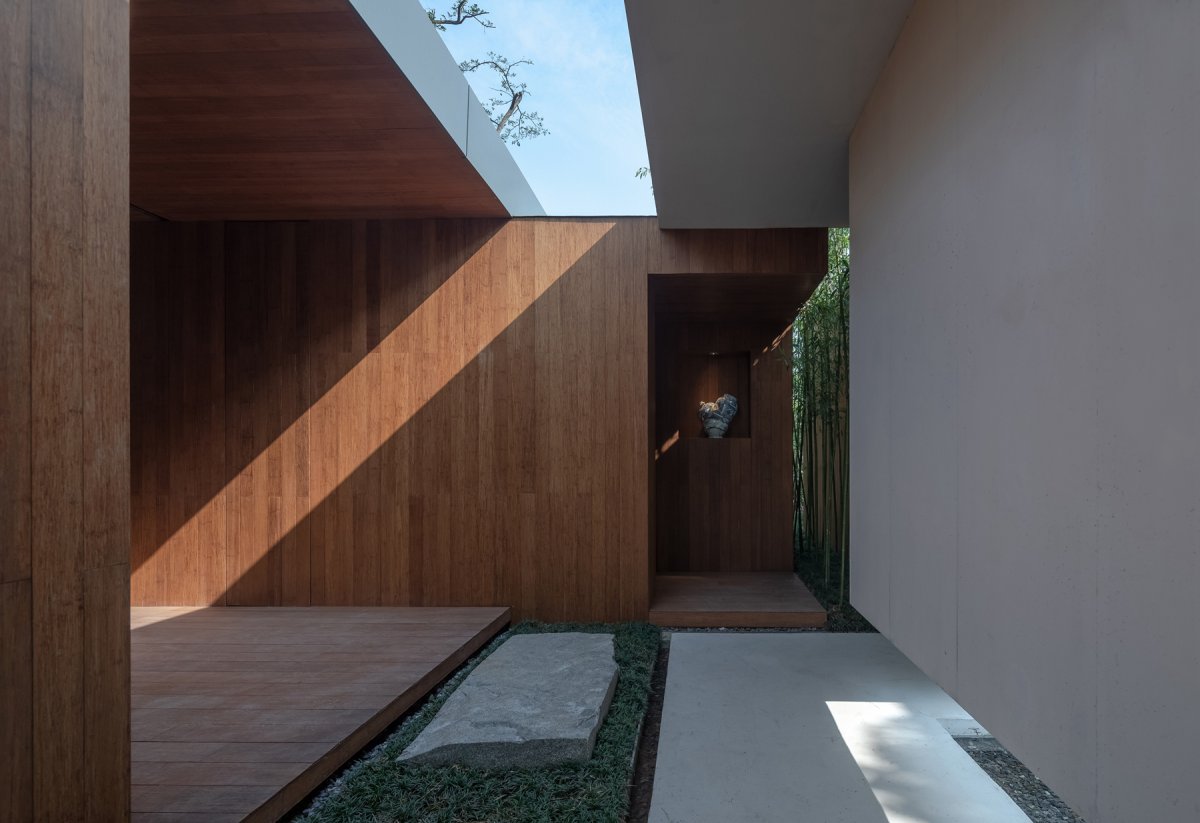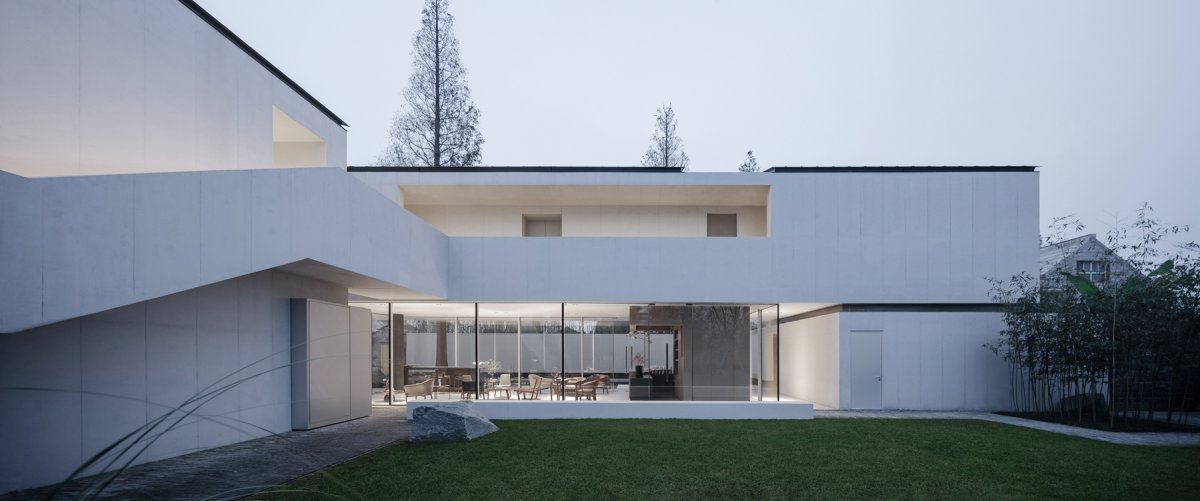
Restoration’, ‘preservation’, and ‘growth from the inside’, these are the keywords that summarize the Zhangyan Cultural Museum. I especially like the word "growth". It not only shows the extended meaning of "life" itself, but also includes the past, the future, and the present.
Stone arch bridge, town god’s temple, gray tile and white wall form a traditional environment that has a complete artistic conception. The conventional way is to construct a new existence based on this established artistic conception, but we try to change the perspective: temporarily cast aside the stereotyped atmosphere brought by the iconic elements and return to the innate structure of the buildings and the earth itself. We use the sensory experience, intuition, and impressions obtained from the outside world to fuse all kinds of emotional phenomena when people face this land. The new is born from the old, and continues to carry its history.
I always like the word "relationship": multiple combination of materials such as glass, bricks, white concrete pitched roof, etc. through collaging, comparing, and connecting, blend to become a whole. In two and a half years, a seemingly endless garden was created in a limited space. With rich moving lines, the water is more than just water, and the wall is more than just walls. Combined with the trees, birds, and the fragrance, the combinations bring infinite possibilities. The space is not only space, but also the meeting point of the five senses. It needs to have the contrast and tension to achieve sustainable beauty or become complete and surprising.
The significance of Zhangyan Cultural Museum is based on ‘time’. The key points of thinking are not about choosing between the ruins and the new born, but a kind of overlap and reconstruction, which discusses the possibility of a non-single linear narrative technique on the time axis. When the new becomes old again someday in the future, the old dissolves along with time, and the newer appears, what will be the new routine at the time then?
Year after year, the two ancient trees are still towering aloft in the place.
- Architect: Horizontal Design
- Interiors: Horizontal Design
- Photos: Su Shengliang / Schran Images
- Words: Ju Bin

